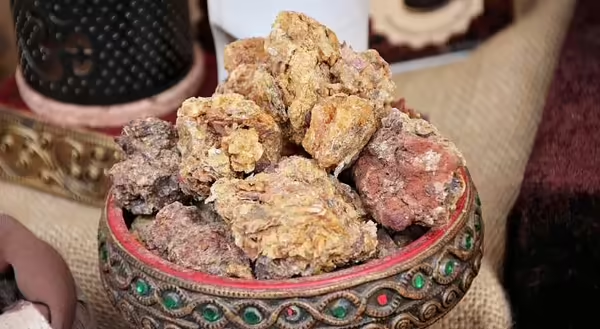
Just what are frankincense and myrrh? Certainly, they are part of many Christmas stories, but do you know what those products are and why they were so valuable? Here is more information on both of these plant-based products.
Frankincense and myrrh are both resins -- dried tree sap -- that come from trees of the genus Boswellia (frankincense) and Commiphora (myrrh), which are common to Somalia and Ethiopia. Both are in the botanical family Burseruceae commonly called the incense tree family.
The value of these products comes partly from their use, but also from their labor-intensive harvesting methods. The sap is collected by cutting the tree's bark, causing the sap to ooze from the cut. The sap used to create both frankincense and myrrh comes slowly and is allowed to dry on the tree for several months. The hardened sap is collected and used as frankincense and myrrh.
Frankincense
Frankincense, also called olibanum, is used mainly for its lovely fragrance, although historically it also had medicinal uses. Frankincense is a tree with papery bark, sparse bunches of paired leaves and has flowers with white petals with red or yellow centers that grows without soil along the rocky shores of Somalia. The young trees furnish the most valuable gum - a milky white ooze that hardens to a tear-shaped droplet with a translucent golden hue.
Frankincense is harvested from naturally occurring stands of Boswellia trees. These trees have never been domesticated. It can take up to 25 years before the resin can be harvested from the tree, but if harvested sustainably the trees are long-lived.
Habitat degradation and overharvesting are leading to a decrease in trees from which resin can be harvested. Overharvesting weakens the tree’s defenses against pests and disease. The seeds from overharvested trees are less likely to germinate which means fewer new trees. Fire and overgrazing by livestock are also keeping the number of new trees at a low level.
Populations can be restored by planting more trees, ceasing burning practices, and adding fences to protect from overgrazing. It is also important that consumers buy frankincense products that are sustainably harvested.
Myrrh
Myrrh is collected from a small 5 to 15-foot tall tree about one foot in diameter called the dindin tree. The tree looks like a short flat-topped hawthorn tree with gnarly branches and sparse leaves in that grow in groups of three. The whitish-green flowers appear before the leaves in the spring. The plant looks scrubby and desolate among the rocks and sands of the desert.
True myrrh is crumbly and dark red inside. The exterior is white and powdery. The best myrrh has little odor and no oily texture. High-quality myrrh demanded the best prices in the Roman Empire, but it did not ship well.
Common uses
The most common use for frankincense and myrrh – past and present – is as incense. It is also used in essential oils, natural medicines, and perfumes. Myrrh is also used medicinally, as an embalmer, in cosmetics, and today myrrh is found in some flavorings.
Today, you can find frankincense and myrrh for sale at stores and on the Internet. Beware that the product you purchase may be resin from another Middle Eastern tree and not the real stuff.
MEET THE AUTHOR
Nicole Flowers-Kimmerle is a Horticulture Educator for Fulton, Mason, Peoria and Tazewell counties. She completed a bachelor of science degree in crop science at the University of Illinois, and a master’s of science degree in agronomy with an emphasis in weed science at the University of Wisconsin-Madison. She has also worked at Montana State University as a research associate where she worked on weed control in sugar beets and barley. She taught high school chemistry and other science classes where she was able to teach students in both the school garden and greenhouse. She works with both the Extension Master Gardeners and Extension Master Naturalists.
ABOUT THE BLOG
ILRiverHort is a blog that helps people connect to nature and grow.
photo from pixaby.com